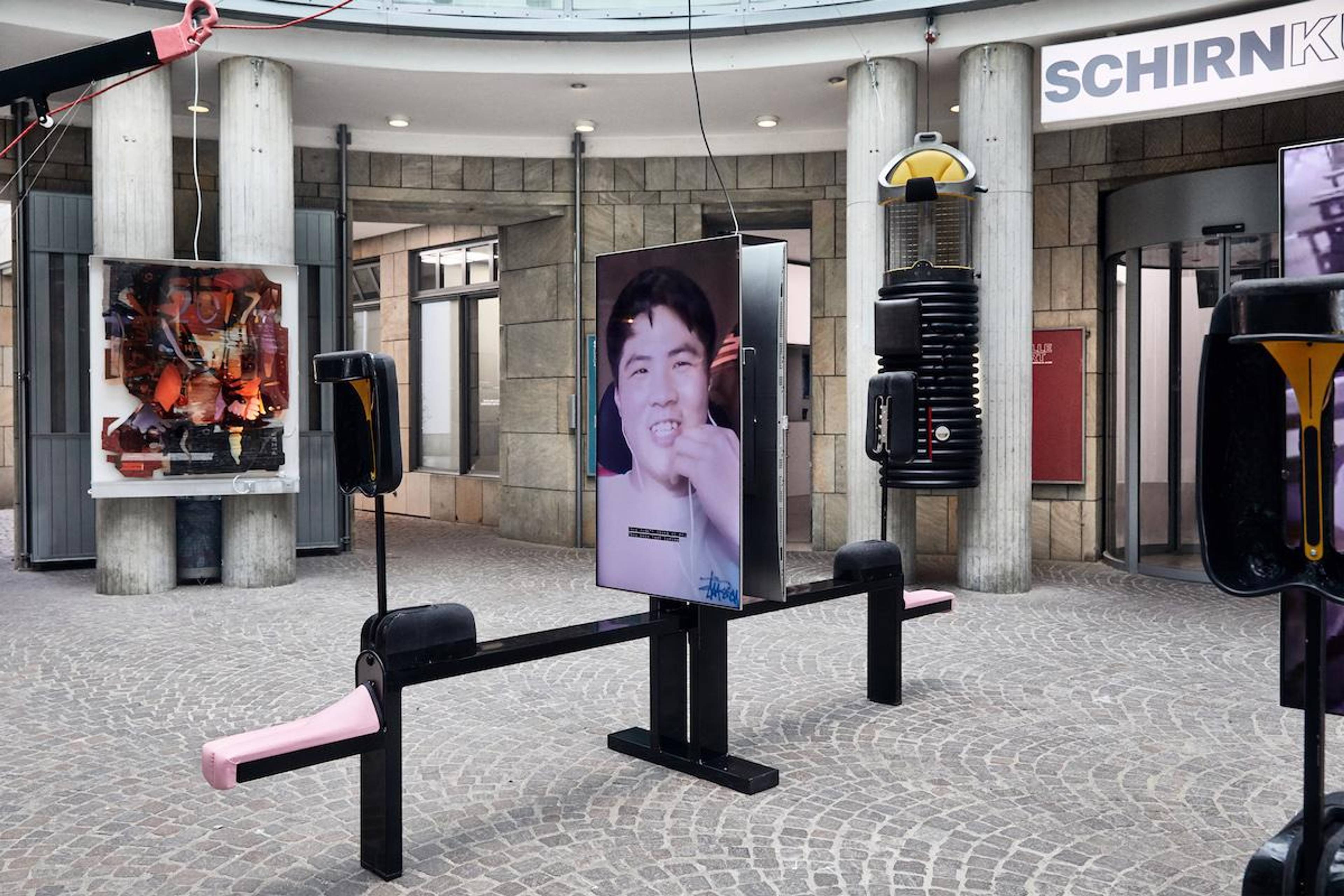This exhibition by Neïl Beloufa (*1985) was amazingly staged. The first part was in front of the Schirn’s main entrance and freely accessible from the street during opening hours. Visitors were encouraged to sit on one of around a dozen long pink foam-filled rubbery supports to look through a medieval-style visor onto vertical screens on which young members of the military from various countries talked about their lives and loves in video chats with the artist. Surrounding them were sculptures that stopped just short of faux-goth robotic figuration, as well as some ropes literalising the idea of interconnection. Upstairs, in the second part of the exhibition, the soldiers’ stories were woven together into an “art fiction” video, set within an installation of Plexiglas and aluminium that forced the viewer to approach by going to and fro, as in an airport security line, before reaching the screening space. Here, the audio recordings sometimes overlaid videogame replays or acted scenes, mixing commentary and narrative; at one point, visitors saw the chat column of the artist’s Skype interface, where he explained the project was “about how militaries (not Hollywood) present themselves”.
Neïl Beloufa Exhibition view of "Global Agreement" (2018) Photo: Marc Krause
This layering and openness multiplied the questions in play, rather than reducing the project to a mission accomplished. Globalisation, as we are so often told, shrinks distance. So why is war so often treated as remote, even though we hear about it all the time? But that was not really or only what Beloufa’s exhibition was “about”, which was much more various: love and youth and technology and workout culture and self-representation and patriotism and cultural conditioning and the future and who the audience is and how everyone is connected and wants to be loved and some people are closer to death than others. One of the most affecting aspects of the show was, however, its formal design, which came across in the emphasis on looking, as the third act made clear. This was when viewers entered the round indoor balcony overlooking the rotunda, where they could look down onto the vertical screens and see others watching and listening to the videos below. Behold the spilled-open panopticon, the surveillance society from the flipside, the tourist/art-viewer’s gaze and projection onto the cultural figure of the soldier. “I grew up very sheltered and joining the military I have met all different people from around the world,” one of them opines. Differences elide. It’s too self-centred to think it’s about me and you, though in some sense it is, and we too are part of an enormous machine that only sometimes lets us see our place within it.
Neïl Beloufa
"Global Agreement"
Schirn Kunsthalle Frankfurt
23 August – 28 October
ALEX SCRIMGEOUR is Editor-at-Large at Spike. He lives in Berlin.
Neïl Beloufa Exhibition view of "Global Agreement" (2018) Photo: Marc Krause
Neïl Beloufa Exhibition view of "Global Agreement" (2018) Photo: Marc Krause
Neïl Beloufa Exhibition view of "Global Agreement" (2018) Photo: Marc Krause






